Water Wisdom: A Guide to Efficient Garden Irrigation
There’s no question that the plants in our gardens need water: They cannot survive, let alone grow or flower, without it.
But unless we water strategically, we’re literally pouring a valuable resource down the drain — or into the storm sewer or drainage ditch as the case may be.
Because water is a finite source that all life, not only plants, rely upon, it only makes sense to use it efficiently.
Not only that, but efficient watering helps prevent soil erosion and the depletion of aquifers by excessive pumping. It can help you lower your water bills. And, strategic watering ensures that you’ll achieve what you set out to do when you irrigate: give your plants what they need — not too much or too little — to thrive.

Slow and steady
To water your garden effectively, it helps to understand how soil absorbs water. While it may look like the water you add to your soil is absorbed immediately and makes an express trip to your plants’ roots, that’s not accurate.
What really happens is more like pouring water onto a dry, multi-layered sponge. At first, the water is concentrated around the spot where you poured it, saturating the top layer of the sponge. This top layer is akin to the top layer of your garden soil. As the sponge absorbs water, the wetness gradually moves down, one layer at a time.
If you don’t keep this in mind when you irrigate, you run the risk of over-watering or under-watering your plants. If you lightly sprinkle your plants daily, for instance, you probably won’t be getting the water deeper than 1 inch, meaning it won’t get to your plants’ roots. It’s better to soak the soil, allowing the water to move down five or six inches.
On the other hand, if you water the soil too frequently, and it gets soggy, you can create an oxygen deficiency and damage your plants’ roots.
So, not only should you soak your soil when you water, but you usually should wait a few days between waterings so plant roots have time to absorb the moisture in the soil.
Is the timing right?
How will you know when your soil is ready for more water? One effective test calls for scooping out a handful of your garden soil. If the soil can be shaped into a ball, it doesn’t need more water. If the soil does not hold together — or if its surface looks hard or cracked — it needs water.
If you’d prefer a less hands-on approach, you can always buy a moisture meter that will alert you when your soil needs more water.
Remember that the time of day when you water makes a difference. Irrigating your garden early in the morning or in the evening helps prevent excessive evaporation.
Know what your plants need

You’ll have other variables to keep in mind, too, including the differing needs of the vegetables, flowers, shrubs, and trees in your garden. Those needs will vary, not only by the type of plant but also based on their environment and the stage they’re in.
Vegetables and herbs planted in the ground, for example, need about an inch of water a week. But they’ll need more water in an arid climate and during hot weather.
Watering needs change for seedlings, which require more irrigation than their mature counterparts until they’re established. Plants grown in containers or raised beds need more water, too, because the soil mixture used in them is made to drain more quickly than soil on the ground.
You have a variety of options to help you measure the amount of water your soil is getting, from placing a rain gauge under your watering system to managing the settings on your drip irrigation system. And that brings us to watering techniques.
Irrigation options
The method you use to deliver water to your plants’ roots will play a significant role in your water efficiency. Here’s a look at some of the more effective options.
Micro sprinklers: These sprinklers are designed to deliver water to specific areas of the garden. They’re good for gardens with a variety of plants, and they can be more efficient than traditional sprinklers because they focus on specific plant zones and minimize water wastage.
Soaker hoses: These hoses with tiny openings allow water to seep out gradually along their length. They’re a good choice for gardens, flower beds, and around trees and shrubs. And, because soaker hoses deliver water directly to the base of plants, they minimize surface evaporation and runoff.
Drip irrigation: This highly targeted system comprises a network of tubes or pipes with emitters that deliver water directly to the base of each plant. It works well for gardens, flower beds, and individual plants. It’s also considered highly efficient: Drip irrigation minimizes water waste and delivers moisture directly to where plants need it most.
Mulch and compost are your friends
If irrigation techniques are the baseball bat that sends water to your soil, then materials like compost and mulch are the catcher’s mitt that helps your soil hold on to it.
Compost gives your soil water absorption and moisture retention superpowers. In fact, for every 1% of organic matter it comprises, your soil can hold an additional 16,500 gallons of water down to one foot deep, according to a study by the Arkansas Water Resources Research Center.
If you go on to top your soil with much, it reduces evaporation from the soil’s surface. And, mulch minimizes the growth of weeds that gulp up moisture your plants need.
More tips
Here are a few more strategies to help you maximize your water efficiency.
- Select drought-tolerant species: These plants, generally, will need minimal irrigation.
- Harvest rainwater: Set up a system that lets you collect and store rainwater, giving you a free source of clean water.
- Trap water on the ground: Devices like tree rings prevent moisture loss and apply water directly to root systems.


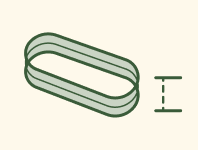
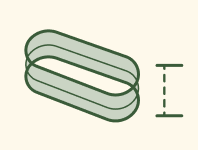
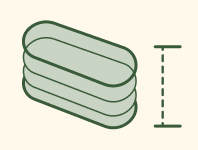
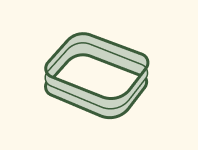
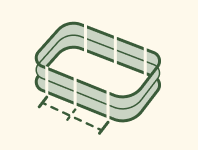
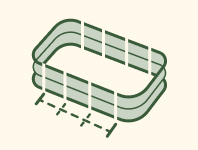
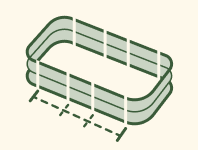
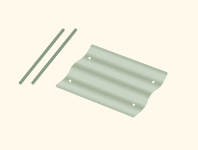


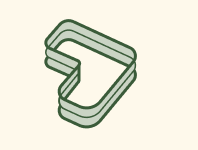
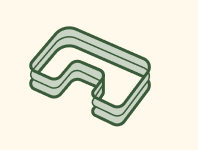
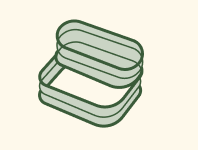
















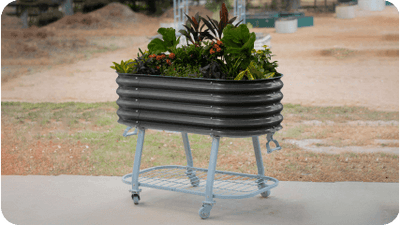









































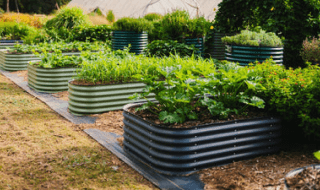
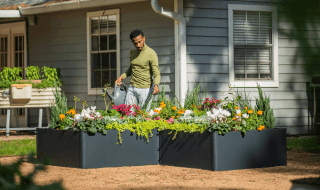
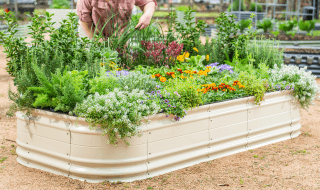
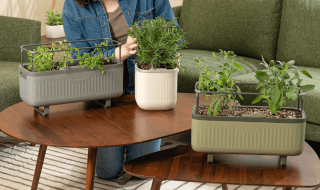
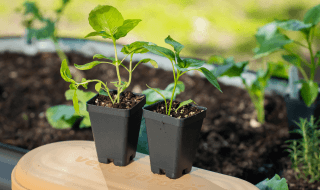
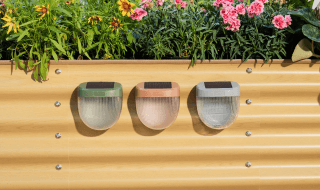
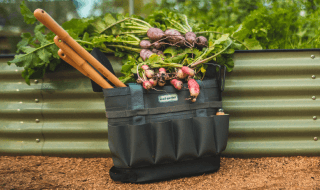
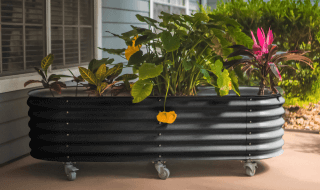







So if I have your raised beds I will not have irrigation set up, so I presume that watering for the raised beds – I have 6 of the 8 feet by 4 feet – will be with a hose on slow adding.
Leave a comment